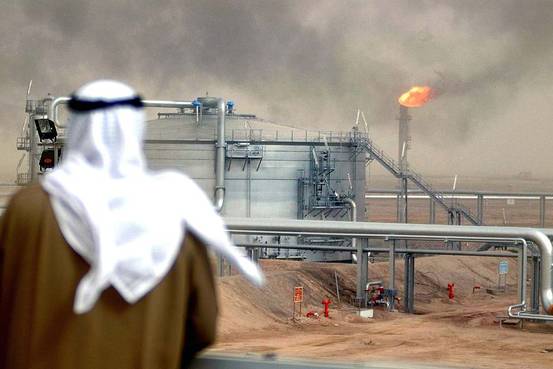The International Monetary Fund released its Regional Economic Outlook for the Middle East and Central Asia, and there was one number that stood towering over everything else, Oil Price at $70. IMF says that’s where Saudi Arabia needs the oil price to be to break even.
That’s quite a steep climb for oil price to make from the current $50-$60 price range that oil futures are trading at now. The IMF expects oil price to continue to stay put in that range, adding more pressure on oil exporters and forcing them to keep running up their deficits.
But the $70 level IMF is talking about is very close to the $75 a barrel price that Saudi Oil Minister Ali Al-Naimi said, in 2008, was the “fair” world oil price.
“The Saudi breakeven oil price to achieve zero deficit in 2017 is $73.10, according to the IMF, compared to $96.60 for 2016. Among the oil exporters in the region, Saudi Arabia has cut its breakeven oil price by the most between 2016 and 2017, but its budget breakeven price of oil is not the lowest in the region. The lowest breakeven price for 2017 is in Kuwait, $46.50, followed closely by Qatar at $46.80, according to IMF estimates.”
Earlier this year, OPEC and other producers decided to extend their agreement to reduce production until the first quarter of next year. But the problem is, the outlook for oil prices has been revised downward since May 2017.
The fiscal deficit situation is bad, contributed to by lower oil prices. According to estimates, fiscal deficits have risen from 1.1% of GDP as of 2014 to above 10% in 2016. The good news is that they’re expected to ease down to about 5% this year due to a somewhat modest oil price recovery and other efforts to reduce the deficits. Meanwhile, debt is still being issued to MENAP oil-exporting nations to address the current wide gap.
As a reflection of lower oil prices, the current deficit in account balance was about $77 billion in 2016, compared to a surplus of $228 billion as of 2014. But the pressure is already being brought to bear on bank asset quality because of US interest rate increases and low oil prices. This affects how the private sector is able to secure credit, which affects growth. Medium-term growth prospects remain below historical averages.
Takeaway
Though oil-exporting countries are pushing hard towards structural reforms and doing their best to diversify their revenue streams, the IMF expects these countries to keep running up their deficits. Economic growth is expected to remain weak as oil prices are not likely to keep moving north from here. Too bad if you are exporting oil, but not so bad if you are importing it.
Thanks for visiting. Please support 1redDrop on social media: Facebook | Twitter



